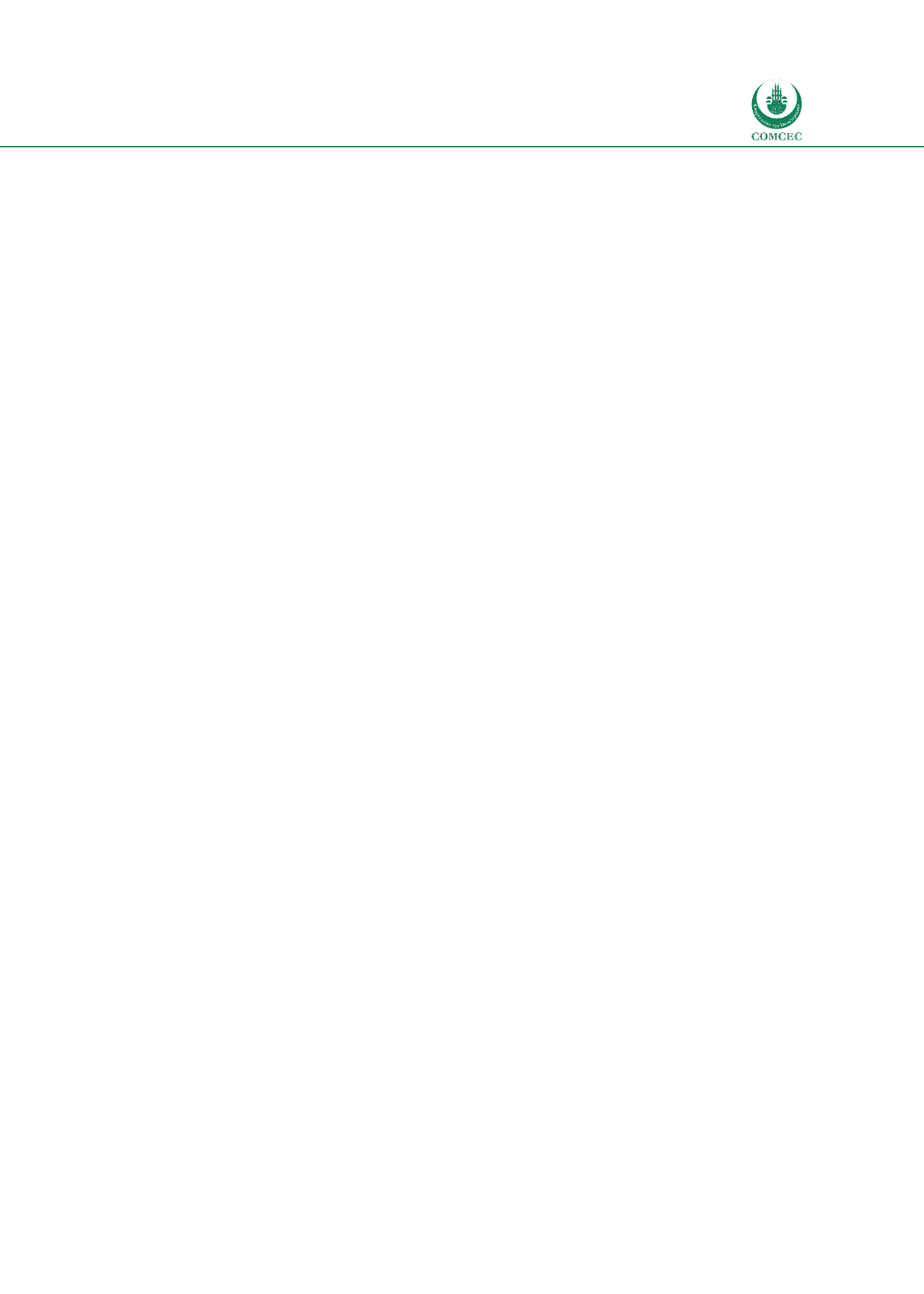

National and Global Islamic Financial Architecture:
Prolems and Possible Solutions for the OIC Member Countries
95
When a bank is liquidated, the NDIC Act stipulates the rights of depositors and other creditors.
After deducting the deposit insurance claims from the amount realized, the NIDC should pay to
depositors and other creditors the net amount available for distribution to them. It is only after
all depositors and creditors are settled that the investors are to be treated. This conventional
banks’ bankruptcy and resolution framework also apply to Islamic banks as well and there is
no separate framework to deal with them.
4.5.2. Financial System Regulatory and Supervisory Framework
The key regulatory bodies in the Nigerian financial sector are the CBN, the NDIC, the NAICOM,
the SEC and the Corporate Affairs Commission (CAC). These bodies derive their regulatory
powers from the Acts establishing them as listed in the supporting laws above. The CAC
registers corporate entities, the CBN provides oversight functions on the banking industry, the
NAICOM regulates the insurance industry, and the SEC oversees the capital market in Nigeria.
The oversight functions of the CBN are complemented by the NDIC that is empowered by the
NDIC Act which requires a licensed bank to submit returns and information from time to time.
Based on the provisions of the CBN and NDIC Acts, these two bodies issue guidelines for the
regulation and supervision of institutions offering non-interest financial services in Nigeria
and Non-Interest Deposit Insurance Schemes based on the principles Islamic commercial
jurisprudence in 2011 and 2015 respectively. The guidelines highlighted additional license
requirements to include evidence of a technical agreement executed by the promoters of the
proposed institution with an established and reputable Islamic bank or financial institution
clearly specifying the role of the two parties which should subsist for a period of not less than 3
years. Moreover, conventional banks are allowed to open a subsidiary, a window or a branch of
Islamic banking. Separate guidelines for the Islamic banking window’s operations were also
released in 2011.
Similarly, NAICOM issued Takaful guidelines in 2013 as the primary regulatory framework
with regards to
Takaful-Insurance
. The Guidelines allow for fully-fledged
Takaful-Insurance
Operators and a
Takaful-Insurance
window of a conventional insurance institution. SEC also
issued rules 569-588 to regulate the
sukuk
market.
The regulatory bodies in the financial sector discharge their responsibilities through their
regulatory and supervisory departments. These departments handle both conventional and
Islamic financial institutions. However, each of these departments has a dedicated unit or team
of Examiners that handle the Islamic financial institutions.
The Supervisory departments undertake both onsite and off-site supervisions of all financial
institutions under their purview. The onsite supervision entails visiting the institutions to
examine their books while off-site entails analysis of their periodic returns. These processes
apply to both conventional and Islamic financial institutions. However, for the Islamic financial
institutions, review of
Shari’ah
Governance and
Shari’ah
Audit is added to the onsite process.
Part of the supervisory process requires that the capital requirements as provided by IFSB 15
are applied to Islamic financial institutions. However, the relevant regulatory bodies have yet
to implement IFSB 15 and 16. As such, the capital requirements under Basel 1 and Pillar 2 of
Basel 2 are currently applied to Islamic financial institutions. The two IFSB Standards are
planned for implementation soon.
















